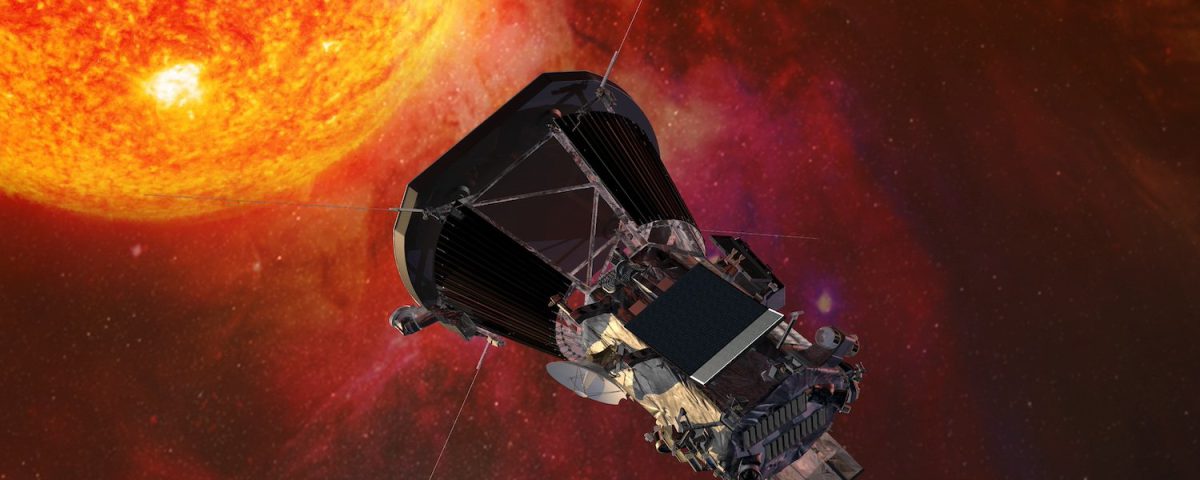NASA’s Solar Probe Will Make History on Christmas Eve by Zooming Closer to the Sun Than Ever
NASA’s Solar Probe Will Make History on Christmas Eve by Zooming Closer to the Sun Than Ever
At 3.8 million miles from the Sun’s surface, Parker Solar Probe will be the closest a human-made object’s ever been to our host star.
Full Article
The Sun is getting a surprise visitor for Christmas: NASA’s Parker Solar Probe, which is going to get uncomfortably close to the star. The tiny probe is gearing up for its closest approach to the Sun this week, when it will endure temperatures up to 1,800 degrees Fahrenheit (982.2 degrees Celsius). The Parker Solar Probe launched in August 2018 on a mission to touch the Sun, inching closer to the star with each orbit. On December 24, the spacecraft will be within 3.8 million miles (6.1 million kilometers) from the Sun’s surface, making it the closest solar approach in history. At that distance, the mission has the potential to revolutionize our understanding of the Sun, withstanding the brutal radiation emanating from the star to collect data on the origin and evolution of solar wind. This close encounter has been a long time in the making. In 2021, the probe became the first mission to fly through the Sun’s corona, or the star’s upper atmosphere. Parker Solar Probe travelled dramatically through a coronal mass ejection (CME), an explosive outburst of high energy radiation from the Sun, in the historic flyby. In September 2022, the mission repeated the maneuver and captured data to help scientists understand how the Sun’s plasma interacts with the interplanetary dust around it. As of this September, the Parker probe has carried out 21 close approaches of the Sun, coming within about 4.51 million miles (7.26 million km) of the solar surface. In November, Parker Solar Probe carried out its seventh and final flyby of Venus, using the planet’s gravitational pull to fling itself toward a closer orbit around the Sun. The flyby was the final step in a mission designed to swing the probe to its closest approach of our host star. The Parker Solar Probe is already the fastest human-made object in history, but during its closest approach, the spacecraft will zip past the Sun at a record-breaking 430,000 miles per hour, according to NASA. The Parker Solar Probe needs that speed to overcome the gravitational pull of the Sun. At such a pace, the spacecraft can travel from Washington, D.C., to Philadelphia in one second. The spacecraft also needs to survive extreme heat from the Sun. Its heat shield will reach temperatures up to 1,800 degrees Fahrenheit (982.2 degrees Celsius), while keeping the body of the spacecraft at a balmy 85 degrees Fahrenheit (29.4 degrees Celsius). Parker Solar Probe’s heat shield is 8 feet (2.4 meters) in diameter and 4.5 inches (about 115 mm) thick. The shield is composed of a carbon composite foam sandwiched between two carbon plates, with a coat of white ceramic paint on the Sun-facing plate to reflect as much heat from the star as possible. As it makes its record proximity swoop near the Sun, the spacecraft will trace the flow of energy across the surface of the star, study the heating of the solar corona, and investigate what accelerates the solar wind, according to NASA. With this data, scientists are hoping to get some answers regarding the Sun’s most persistent mysteries. One of the most befuddling aspects of the Sun is that its corona, or upper atmosphere, is about 200 times hotter than its surface. Other heliophysical quandaries Parker may address are the main driver of solar wind and the source of high-energy solar particles. Data from the probe can also help scientists better predict space weather, which can impact Earth through beautiful aurora and damaging surges to the globe’s electrical infrastructure. The Christmas Eve flyby is the first of three at the same distance from the Sun, taking full advantage of the spacecraft’s daredevil capacities.
NASAParker Solar ProbeSolar Systemstarsthe Sun
Get the best tech, science, and culture news in your inbox daily.
News from the future, delivered to your present.
Please select your desired newsletters and submit your email to upgrade your inbox.
The spacecraft survived scorching temperatures at a record proximity, and is expected to send details of its close call in the new year.
Parker Solar Probe will break its silence on Fridayâthat is, if it survived its closest approach to the Sun.
Perplexing data in the early 2000s raised questions about how planetary formation began in the universe, and new data from Webb provides some answers.
The Orion crew capsule is designed to jettison away from the SLS rocket in a launch abort scenario.
The space agency is looking to maintain human presence in the microgravity environment as it transitions to commercial stations.
The otherworldly helicopter, with its 36 blades, is the size of an SUVâa major upgrade from Ingenuity’s four blades.
The Best Tech Gifts of 2024 â We may earn a commission when you buy through links on our sites.
©2024 GIZMODO USA LLC. All rights reserved. Mode
Follow us
Mode
Follow us



